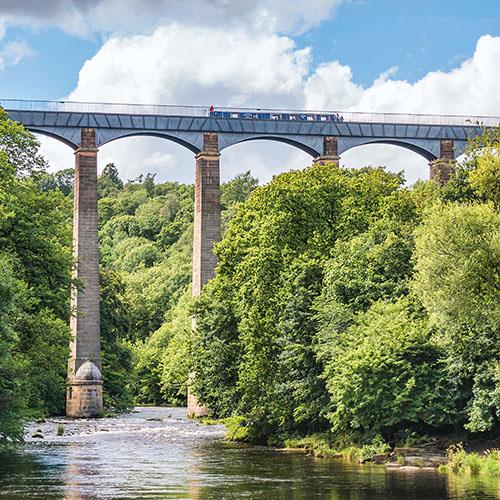


Wales is home to three UNESCO World Heritage Sites. These sites range from the powerful castles and city walls of North Wales to the highest canal in the world to the ironworks that were so crucial to economic success and development in Wales during the Industrial Revolution. UNESCO helps the national government and local governments in preserving these historically and culturally significant sites. You can learn more about the most impressive Welsh UNESCO Sites by clicking here.
Mainly a rural area with many mountains, lakes and valleys, North Wales is a beautiful region to explore, and that`s why it has been a popular tourist destination for nearly two centuries. Snowdonia National Park takes up much of the western portion of North Wales, and features the highest mountains in Britain outside of Scotland.
The Pembrokeshire Coast serves as an excellent base from which to explore the scenic southwest coast of Wales. Jutting out into the Irish Sea, the southwesterly tip of Wales is an area just begging to be explored. It's also a great place from which to discover the rest of western Wales, including lovely Carmarthenshire.
Glamorgan covers a large portion of Wales's southern coast. There are more castles in Glamorgan than in any other region of Wales. It is home to the two most important cities in Wales: Cardiff, its capital; and Swansea, Wales's second city, located at the eastern end of the beautiful Gower Peninsula.
England is home to 20 UNESCO World Heritage Sites, ranging from ancient stone circles to remnants of the country`s excellence during the Industrial Revolution to telescopes observing the farthest reaches of outer space. The UNESCO sites located in England are snapshots of centuries of history up to the present.
Scotland is home to five UNESCO World Heritage Sites. Two are located off the mainland: the Neolithic monuments of the Orkney Islands and historic St. Kilda in the Outer Hebrides. Three are located in the Lothians and Lowlands: Edinburgh`s Old and New Towns, the Forth Bridge, and the village of New Lanark.
There are three UNESCO World Heritage Sites located in Ireland. The most popular of the Irish UNESCO sites is Skellig Michael, an imposing island located off the coast of County Kerry. The others are the Boyne valley tombs in County Meath and Giant`s Causeway on the County Antrim coast in Northern Ireland.